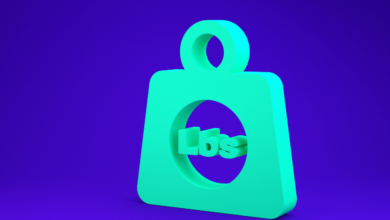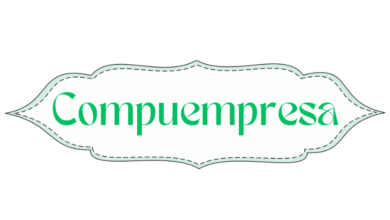https://i.pixxxels.cc/sdbpbtgr/images.jpg[/img]
![[img]https://i.pixxxels.cc/sdbpbtgr/images.jpg[/img]](https://loolypoop.com/wp-content/uploads/2024/07/imghttpsi.pixxxels.ccsdbpbtgrimages.jpgimg-780x470.png)
Ever puzzled why your pictures now and again appearance blurry when you upload them on-line? [img]https://i.pixxxels.cc/sdbpbtgr/images.jpg[/img] Or why a few pics load faster than others? It’s all about the image file codecs! Understanding those formats is essential for each person managing digital snap shots. Whether you are a photographer, internet dressmaker, or just a person who loves sharing snap shots on social media, understanding the differences among image report codecs can make a large
Understanding Image File Formats
Definition and Purpose
Image document formats are like bins that keep your visible statistics. Each format has its own way of squeezing and storing this records, affecting the photograph’s great, length, and compatibility with diverse gadgets and software program.
How Different Formats Affect Image Quality
Different formats have particular algorithms for compressing information, which without delay influences the photo pleasant and document size.[img]https://i.pixxxels.cc/sdbpbtgr/images.jpg[/img] Some formats are designed to keep excessive nice, even as others prioritize smaller file sizes for quicker loading instances.
JPEG (Joint Photographic Experts Group)![[img]https://i.pixxxels.cc/sdbpbtgr/images.jpg[/img]](https://loolypoop.com/wp-content/uploads/2024/07/imghttpsi.pixxxels.ccsdbpbtgrimages.jpgimg-1.png) Characteristics of JPEG
Characteristics of JPEG
JPEG is one of the most not unusual photograph formats. It makes use of lossy compression, which reduces document size with the aid of discarding some picture facts. This layout is ideal for snap shots and photos with many colours.i.pixxxels.cc/sdbpbtgr/images.
Pros and Cons of Using JPEG
Pros:
- Smaller record length
- Widely supported across gadgets and systeme
cons:
- Loss of first-rate with every edit and shop
- Not suitable for snap shots requiring transparency
Best Use Cases for JPEG
JPEG is ideal for virtual photography, social media, and net use where quick loading instances are vita[img]https://i.pixxxels.cc/sdbpbtgr/images.jpg[/img]l.
PNG (Portable Network Graphics)
Characteristics of PNG
PNG is a lossless format, meaning it keeps all of the image facts and quality. It helps transparency, making it perfect for portraits and snap shots with textual content.
Pros and Cons of Using PNG
Pros:
- High image nice
- Supports transparency
Cons:
- Larger report length compared to JPEG
- Not always perfect for photos because of larger record size
Best Use Cases for PNG
PNG is great for logos, internet snap shots, and photos requiring a transparent background.
GIF (Graphics Interchange Format)
Characteristics of GIF
GIFs use lossless compression and assist animations. However, they’ve a confined coloration palette of 256 colors, which could affect photograph high-quality.
Pros and Cons of Using GIF
Pros:
- Supports animation
- Small document length
Cons:
Limited colour range
Not perfect for distinct photographs
Best Use Cases for GIF
GIFs are perfect for simple animations, memes, and small snap shots with restricted colorations.
BMP (Bitmap)
Characteristics of BMP
BMP is an uncompressed format that retains excessive photo high-quality but consequences in very big report sizes.
Pros and Cons of Using BMP
Pros:
- High best
- Simple format
Cons:
- Extremely huge report size
- Limited compatibility with net use
Best Use Cases for BMP
BMP is often used for superb photo storage and modifying however is less commonplace for internet use because of its size.[img]https://i.pixxxels.cc/sdbpbtgr/images.jpg[/img]
TIFF (Tagged Image File Format)![[img]https://i.pixxxels.cc/sdbpbtgr/images.jpg[/img]](https://loolypoop.com/wp-content/uploads/2024/07/imghttpsi.pixxxels.ccsdbpbtgrimages.jpgimg-3.png) Characteristics of TIFF
Characteristics of TIFF
TIFF is a versatile layout that helps both lossless and lossy compression. It’s recognized for its high first-rate and is normally utilized in expert photography and publishing.
Pros and Cons of Using TIFF
Pros:
- Excellent photo satisfactory
- Flexible compression options
Cons:
Large record length
Not extensively supported by means of web browsers
Best Use Cases for TIFF
TIFF is right for print media, expert photography, and archival storage.
WEBP
Characteristics of WEBP
WEBP is a contemporary layout advanced via Google that gives each lossy and lossless compression. It pursuits to lessen report size even as preserving excessive first-rate.
Pros and Cons of Using WEBP
Pros:
- High great with smaller file sizes
- Supports transparency and animation
cons:
Limited compatibility with some older browsers and software program
Best Use Cases for WEBP
WEBP is outstanding for net use, supplying an amazing balance between quality and file size.
RAW Image Files
Characteristics of RAW
RAW files comprise unprocessed information directly from the digicam sensor. They offer maximum image satisfactory and versatility for put up-processing.
Pros and Cons of Using RAW
Pros:
- Highest photograph nice
- Great for publish-processing
Cons:
- Very massive document size
- Requires unique software program to view and edit
Best Use Cases for RAW
RAW is the cross-to format for expert photographers and critical hobbyists who do huge editing.
Comparing Image Formats![[img]https://i.pixxxels.cc/sdbpbtgr/images.jpg[/img]](https://loolypoop.com/wp-content/uploads/2024/07/imghttpsi.pixxxels.ccsdbpbtgrimages.jpgimg-2-1.png) Quality vs. File Size
Quality vs. File Size
When choosing an picture format, you often should stability high-quality and record length. Formats like JPEG and WEBP provide smaller sizes with a few high-quality loss, at the same time as PNG and TIFF offer better pleasant at the fee of larger documents.
Compatibility with Devices and Software
Ensure your chosen format is like minded with the devices and software program you intend to apply. JPEG and PNG are universally supported, while formats like WEBP and RAW can also require specific equipment.
Choosing the Right Format for Your Needs
Factors to Consider
Consider the cause of your picture, the specified quality, and the available storage space. Each format has its strengths and weaknesses, so pick the only that quality fits your wishes.
Tips for Making the Best Choice
- For net use, prioritize codecs that balance excellent and report length like JPEG and WEBP.
- For professional editing, use formats that keep great like RAW and TIFF.
- For simple pix and transparency, pick PNG.
Optimizing Images for Web Use
Techniques for Reducing File Size
Use photo compression equipment, adjust photograph dimensions, and pick the suitable format to reduce file length with out sacrificing an excessive amount of satisfactory.
Tools for Image Optimization
Tools like TinyPNG, JPEGmini, and Google’s PageSpeed Insights assist you to optimize images for quicker loading instances.
Future Trends in Image File Formats
Emerging Formats and Technologies
New codecs like HEIF (High Efficiency Image Format) are emerging, supplying better compression and first-rate. Keep an eye on those traits to live present day.
Predictions for the Future
As generation advances, we will count on more efficient codecs that provide higher excellent at smaller sizes, enhancing consumer enjoy across all gadgets.
Common Mistakes to Avoid
Errors in Choosing Image Formats
Avoid the usage of formats that are incompatible along with your meant platform or that unnecessarily compromise great.
How to Avoid These Mistakes
Stay informed about the strengths and weaknesses of each format and choose primarily based on your unique wishes and context.
Conclusion
Understanding photo record formats is critical for all people managing digital photographs. By selecting the proper format, you could ensure your pics appearance incredible, load fast, and are well suited with various gadgets and software. Remember to consider your unique desires and live knowledgeable approximately new traits in photo codecs.
FAQs
What is the fine photograph layout for net use?
JPEG and WEBP are regularly the fine selections because of their balance of fine and file size.
How can I convert an picture to a exceptional format?
You can use picture modifying software like Adobe Photoshop or free on-line equipment like Convertio to transform photos.
Is there a lack of high-quality when converting photograph codecs?
Yes, particularly whilst changing from a lossless layout to a lossy one like JPEG.
What image format is exceptional for printing?
TIFF is typically the best format for printing due to its high great.
Can I use a couple of image codecs for a single undertaking?
Absolutely! Use one of a kind codecs primarily based at the needs of every photograph inside the mission.



